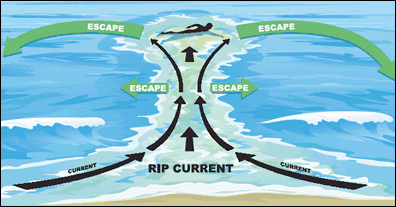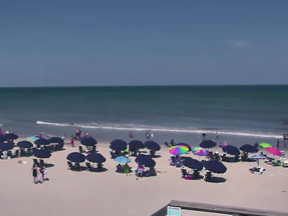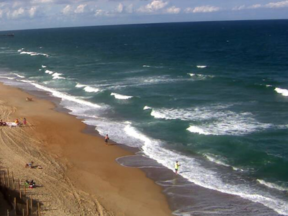Rip Currents Safety Tips
Rip currents can attain speeds as high as 8 feet per second. This is faster than an Olympic swimmer can sprint! Some rip currents last for a few hours; others are permanent. Rip currents range from 50 to 100 feet or more in width. They can extend up to 1000 feet offshore. Rip currents are powerful currents of water moving away from shore. On average, more people die every year from rip currents than from shark attacks, tornadoes, lightning or hurricanes.

In some places swimmers may encounter strong undertows and rip currents. Rip currents are so strong that they can carry swimmers away from shore before they know what’s happening. Rip currents can move to to sea at 5mph, that doesn’t seem alarming, but that is faster than most olympic swimmers. If you are caught in a rip current, swim parallel to the shore (alongside the shore) rather than back toward the beach until the water stops pulling you, then swim back to shore. If you can’t get back to the beach, tread water and wave for help.
If Caught in a Rip Current:
- Remain calm to conserve energy and think clearly.
- Never fight against the current.
- Think of it like a treadmill that cannot be turned off, which you need to step to the side of.
- If you are unable to swim out of the rip current, float or calmly tread water. When out of the current, swim towards shore.
- If you are still unable to reach shore, draw attention to yourself by waving your arm and yelling for help.
Rip Currents Video:
Beachgoers should be aware of how dangerous rip currents are, and swim only at beaches with lifeguards in the designated swimming area. Rip currents can form in any large open water area, such as low spots and breaks in sandbars, or near structures such as jetties and piers.
Rip Current Safety Videos



